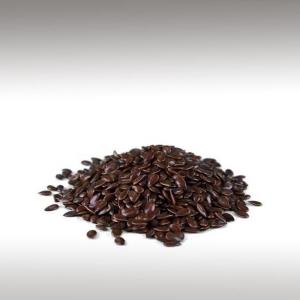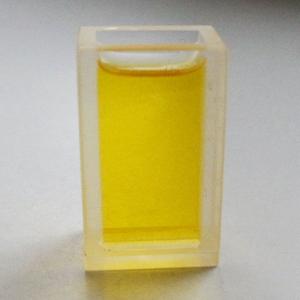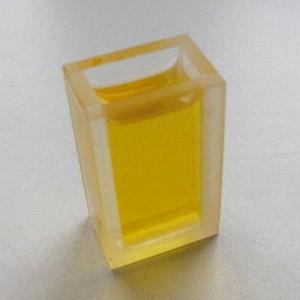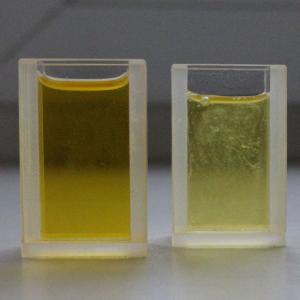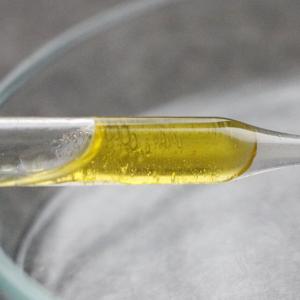
LINSEED OIL (LINUM USITATISSIMUM) - BASE OILS

BASE / GENERAL DATA
Information submited: September 29, 2014 Modified: May 9, 2018 By: OperaDreamhouse
Linseed (Flax), with the binomial name: Linum Usitatissimum, is a member of the genus Linum in the family Linaceae.
It is a food and fiber crop that is grown in cooler regions of the
world. The species is native to the region extending from the eastern Mediterranean, through Western Asia and the Middle East, to India.
The earliest evidence of humans using wild Flax as a textile comes from the present day Republic of Georgia, where spun, dyed, and knotted wild Flax fibers were found in Dzudzuana Cave and dated to the Upper Paleolithic, 30,000 years ago. Flax was first domesticated in the Fertile Crescent region during the Neolithic Revolution and is one of the oldest fiber crops in the world.
Flax was extensively cultivated in ancient Egypt, where temple walls had paintings of flowering Flax and mummies were entombed in Linen. Egyptian priests only wore linen, as Flax was considered a symbol of purity. Phoenicians traded Egyptian linen throughout the Mediterranean, and the Romans loved to use it for their sails.
As the Roman Empire declined, so did Flax production, but Charlemagne revived the crop in the 8th century CE with laws designed to promote the hygiene of Linen textiles and the health of Linseed oil.
Flax, Linum Usitatissimum, is an upright annual plant growing to 1,2 m tall, with slender stems. The leaves are glaucous green, slender lanceolate, 20 - 40 mm long and 3 mm broad.
The flowers are pure pale blue, 15 - 25 mm diameter, with five petals. They can also be bright red. The fruit is a round, dry capsule 5 - 9 mm diameter, containing several glossy brown seeds shaped like an apple pip, 4 - 7 mm long.
Linseed oil, also known as Flaxseed oil is a colourless to yellowish oil obtained from the dried, ripened seeds of the Flax plant.
The oil is obtained by pressing. Flax-based oils are sought after as food because of their high levels of α-Linolenic acid (a particular form of omega - 3 fatty acid), but it is important that only food-grade oil be used for food (unsaturated α-linolenic acid (55,2%),saturated acids palmitic acid (about 7%) and stearic acid (4,6%), monounsaturated oleic acid (22,6%), unsaturated linoleic acid (17%)).
Linseed oil are rich sources of theessential fatty acid alpha-linolenic acid (ALA). In the body, some ALA is converted to omega-3 fatty acids.
Linseed oil is a triglyceride, like other fats. Linseed oil is distinctive for its unusually large amount of α-linolenic acid, which has a distinctive reaction with oxygen in air.
Flaxseed oil is easily oxidized, and rapidly becomes rancid, with an unpleasant odour, unless refrigerated. Even when kept under cool conditions, it has a shelf life of only a few weeks. Oil with an unpleasant or rancid odor should be discarded.
The earliest evidence of humans using wild Flax as a textile comes from the present day Republic of Georgia, where spun, dyed, and knotted wild Flax fibers were found in Dzudzuana Cave and dated to the Upper Paleolithic, 30,000 years ago. Flax was first domesticated in the Fertile Crescent region during the Neolithic Revolution and is one of the oldest fiber crops in the world.
Flax was extensively cultivated in ancient Egypt, where temple walls had paintings of flowering Flax and mummies were entombed in Linen. Egyptian priests only wore linen, as Flax was considered a symbol of purity. Phoenicians traded Egyptian linen throughout the Mediterranean, and the Romans loved to use it for their sails.
As the Roman Empire declined, so did Flax production, but Charlemagne revived the crop in the 8th century CE with laws designed to promote the hygiene of Linen textiles and the health of Linseed oil.
Flax, Linum Usitatissimum, is an upright annual plant growing to 1,2 m tall, with slender stems. The leaves are glaucous green, slender lanceolate, 20 - 40 mm long and 3 mm broad.
The flowers are pure pale blue, 15 - 25 mm diameter, with five petals. They can also be bright red. The fruit is a round, dry capsule 5 - 9 mm diameter, containing several glossy brown seeds shaped like an apple pip, 4 - 7 mm long.
Linseed oil, also known as Flaxseed oil is a colourless to yellowish oil obtained from the dried, ripened seeds of the Flax plant.
The oil is obtained by pressing. Flax-based oils are sought after as food because of their high levels of α-Linolenic acid (a particular form of omega - 3 fatty acid), but it is important that only food-grade oil be used for food (unsaturated α-linolenic acid (55,2%),saturated acids palmitic acid (about 7%) and stearic acid (4,6%), monounsaturated oleic acid (22,6%), unsaturated linoleic acid (17%)).
Linseed oil are rich sources of theessential fatty acid alpha-linolenic acid (ALA). In the body, some ALA is converted to omega-3 fatty acids.
Linseed oil is a triglyceride, like other fats. Linseed oil is distinctive for its unusually large amount of α-linolenic acid, which has a distinctive reaction with oxygen in air.
Flaxseed oil is easily oxidized, and rapidly becomes rancid, with an unpleasant odour, unless refrigerated. Even when kept under cool conditions, it has a shelf life of only a few weeks. Oil with an unpleasant or rancid odor should be discarded.

SPIRITUAL PRACTISES DATA



